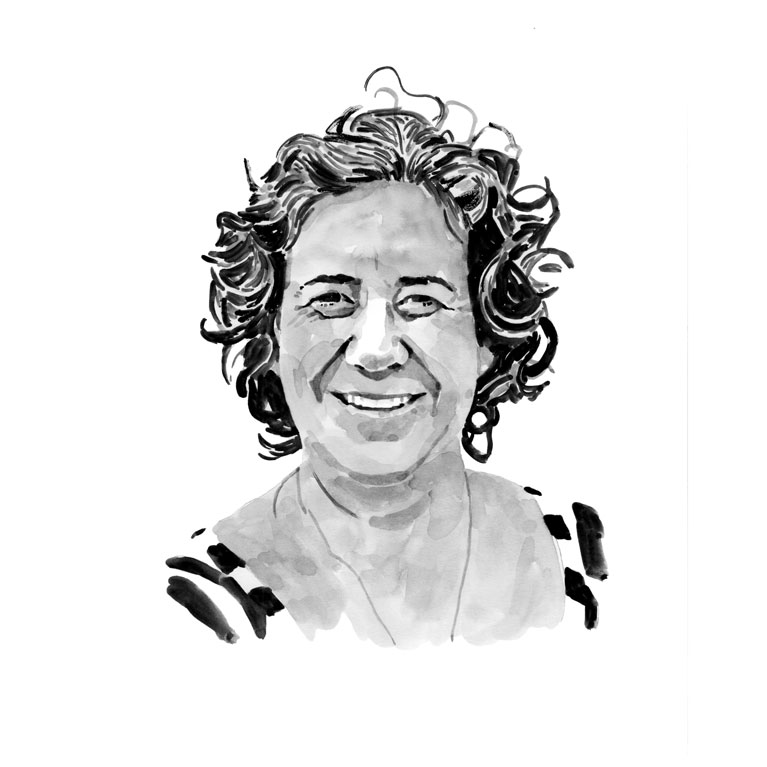Patricia Charvet

Who I am
I have wanted to work with sharks and rays since I was a teenager. I am not sure how the passion for these magnificent animals began, but it probably started because I have been fascinated by the ocean and its creatures from childhood. As an undergraduate biology student, I wanted to study and understand them even more. When I started my Master´s studies in Belém, northern Brazil, I wanted to work with sawfish in that region, but my MSc counsellor persuaded me to focus on freshwater stingrays instead, on account of the challenges posed by field work on sawfish. Then, as a PhD candidate, I was presented with an opportunity to obtain data about a beautiful freshwater stingray before the construction of a hydroelectric dam, and sawfish had to be left aside again. Nevertheless, in all the time I was working with other ray species, I continued to collect sawfish data at the main landing sites of the state of Pará and part of Amapá. As I observed landings of sawfish decline severely, I spoke up and contributed to establishing national and international protection for them. Even after laws were established to protect them, I noted that fishers feared them and that the public in general knew very little about them. Sawfish are among my favourite rays and with this project I want to confirm that the Amazonian coast is one of their last strongholds in the world and to contribute to the recovery of their populations in northern South America. I hope to finally have a chance to work with them and to increase awareness of and protection for them by showing people how important they are for estuarine and marine ecosystems. I especially want to start a sawfish revival in the Amazon coastal region.
Where I work
Strong warm winds, quickly changing tides and fast-moving currents are common features along the Amazonian coast. There are also extensive mangrove areas and sandbanks and mudbanks in this region, where the Amazon River pours its waters into the Atlantic Ocean. In the rainy season, this discharge of water reaches far out to sea and the Atlantic becomes a freshwater ocean for many kilometres. In the dry season, much of the ocean along this coast comprises alternating layers of fresh, brackish and salt waters. These dynamic processes make this one of the richest regions in the world in terms of aquatic biodiversity and fishery resources, a situation that is good for fisheries but bad for sawfish, which easily become entangled in nets and other kinds of fishing gear. Sawfish seem to use the areas of shallow banks and mangroves as refuges, but we are not sure where they stay and how else they use this region. The coast is lined with small fishing villages and there are some major landing sites for both artisanal and industrial fishing fleets. Markets are lively, with people bustling around and choosing the day’s fresh catch for their meals. Sometimes I hear fishers say they have caught a sawfish or I learn about a trade in sawfish parts that should no longer exist. Although sawfish are not targeted, they are sometimes caught incidentally and then they are welcomed, since their parts – mainly the saw teeth, which are used as spurs in cockfighting – are very valuable. The Amazonian coast covers a large area and law enforcement can be quite challenging. It would help if people living there understood that sawfish are Critically Endangered and how to release them safely if caught. Thus they could help to ensure that sawfish will survive to be admired by future generations.
What I do
There are many activities involved in this project. The first is to seek information that tells me where sawfish were, and still are, found. Since they easily get entangled in nets, most fishermen know them. I talk to older and retired fishermen, who tell stories from a time when sawfish used to be abundant in their catches and were often seen in the wild in shallow mangrove areas. And I talk to young active fishermen, who tell me how rare these rays have become. It’s also important to talk to people in the busy markets, since they occasionally see or trade saws and saw teeth. My research team looks for evidence to confirm the presence of sawfish in the region by looking for their DNA in the environment. Coastal water is collected from various points, filtered and analysed to find out whether sawfish left DNA in it. This helps to establish priority regions for their conservation and the information is shared with environmental authorities. Since I would like local fishermen and the fishing industry to engage on sawfish conservation, I also talk to fishery leaders and stakeholders to tell them about the importance of these rays to the ecosystem and how to release them if they get entangled in fishing gear. We also discuss how best to recover sawfish populations and protect them. People in general know little about sawfish, so I talk to children and adults about their importance for the ocean and how to make sure they will stay safe in that region in future. Finally, I also train enforcement agents so that they can easily recognise sawfish-related products and sawfish parts, and make sure that regulations are followed. I believe that confirming the presence of sawfish, increasing awareness about them and education are key to saving these rays.
